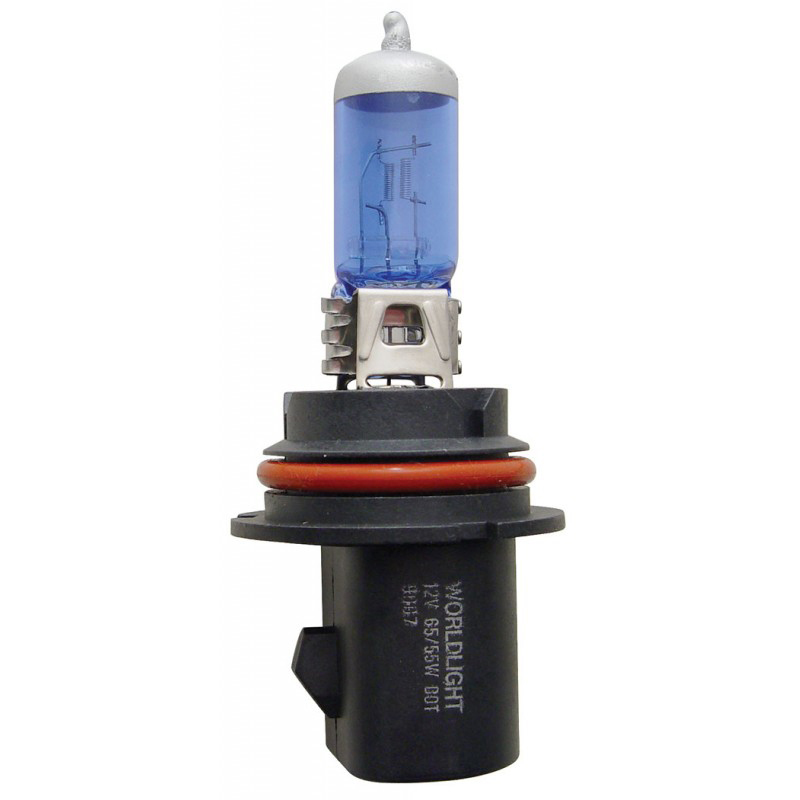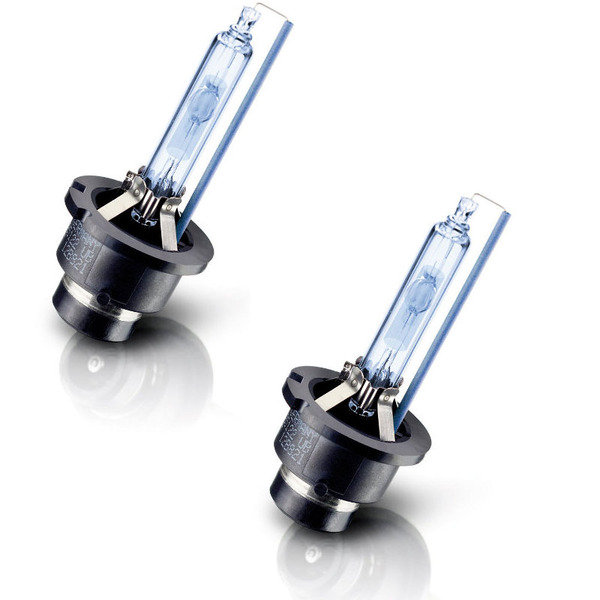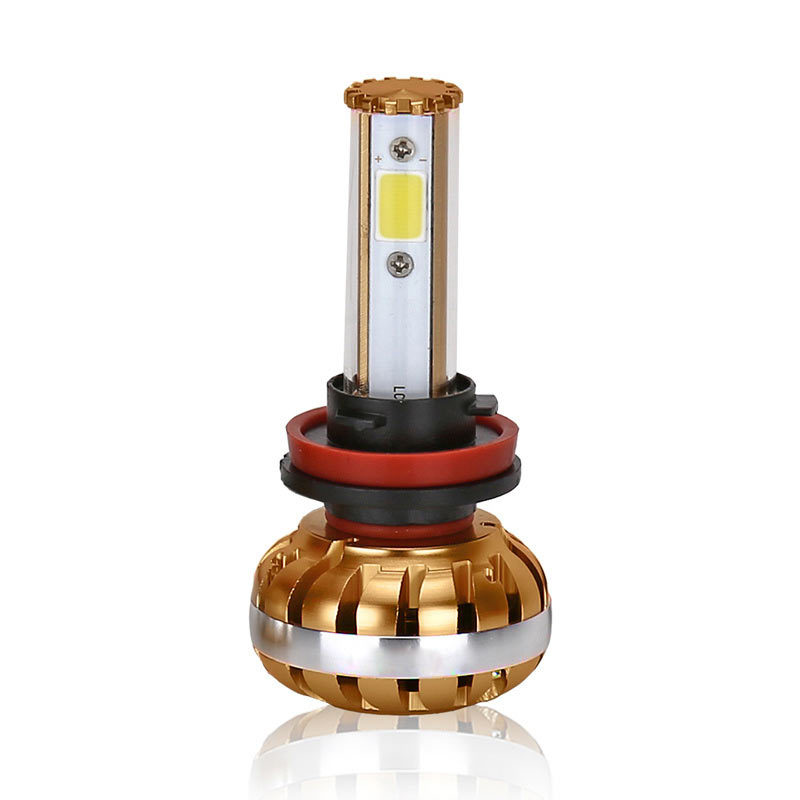LED VS HID VS Halogen - Light Guide

The search for your perfect light is heating up. In today's market for lights you may find yourself scratching your head at the many options you can choose from. In our Guide below we will go over the 3 main types of lights you will see in your search and help you ultimately decide on your preference. These 3 main types of lights will be broken down for you and help get you more comfortable in choosing the best fit for your driving style.
 The most common bulb in today's cars, trucks, and semis is the Halogen
bulb. Halogen bulbs use a Tungsten Filament similar to what you may find
in your everyday household incandescent bulb. The difference in your
household incandescent bulb and the Halogen bulb is the bubble of Halogen
Gas inside of the headlight bulb. This gas increases performance and
longevity of your light giving you the most common option among car
designers. The life expectancy among these bulbs is around 500-1000 hours.
One of our most commonly purchased bulbs is the
9007 halogen bulb 100/80W. You can expect a plethora of color and Kelvin ratings to choose from on
these lights. Anything from your normal light output to a high kelvin
rating purple tinted light that can compete with the best of them on light
output.
The most common bulb in today's cars, trucks, and semis is the Halogen
bulb. Halogen bulbs use a Tungsten Filament similar to what you may find
in your everyday household incandescent bulb. The difference in your
household incandescent bulb and the Halogen bulb is the bubble of Halogen
Gas inside of the headlight bulb. This gas increases performance and
longevity of your light giving you the most common option among car
designers. The life expectancy among these bulbs is around 500-1000 hours.
One of our most commonly purchased bulbs is the
9007 halogen bulb 100/80W. You can expect a plethora of color and Kelvin ratings to choose from on
these lights. Anything from your normal light output to a high kelvin
rating purple tinted light that can compete with the best of them on light
output.
 A newer more high end bulb type seen on the road today is the HID or
High Intensity Discharge headlights. HID Bulbs normally come as a plug and
play kit including ballasts and bulbs. These kits allow you to install HID
bulbs in your vehicle even if it was not equipped with them from factory.
These Headlight are known for superior brightness equaling around 2-3
times the light output of Halogen bulbs. Many high end automakers such as
Lexus, Audi, BMW, Range Rover have been featuring HID lights in their line
of vehicles giving the owner the upper hand on other drivers. HID bulbs
require less energy to operate and average around 35 watts of power to
run. The average life of HID bulbs are around 2000 hours. The light
accompanied by HID bulbs is described as a cool white glow with blue
tinge. This is caused by Xenon gas inside the light which enables zero
flickering when turned on. Though these lights are bright, maximum
brightness can take up to a minute to be reached when turned on due to the
gas makeup of these bulbs. Overall HID Bulbs will light up your path and
keep you seeing everything you come across while out on the road.
A newer more high end bulb type seen on the road today is the HID or
High Intensity Discharge headlights. HID Bulbs normally come as a plug and
play kit including ballasts and bulbs. These kits allow you to install HID
bulbs in your vehicle even if it was not equipped with them from factory.
These Headlight are known for superior brightness equaling around 2-3
times the light output of Halogen bulbs. Many high end automakers such as
Lexus, Audi, BMW, Range Rover have been featuring HID lights in their line
of vehicles giving the owner the upper hand on other drivers. HID bulbs
require less energy to operate and average around 35 watts of power to
run. The average life of HID bulbs are around 2000 hours. The light
accompanied by HID bulbs is described as a cool white glow with blue
tinge. This is caused by Xenon gas inside the light which enables zero
flickering when turned on. Though these lights are bright, maximum
brightness can take up to a minute to be reached when turned on due to the
gas makeup of these bulbs. Overall HID Bulbs will light up your path and
keep you seeing everything you come across while out on the road.
 Last but certainly not least is the LED bulb. While yes LED bulbs have
been around for a long time, please do not be confused when I say the
evolution of LED bulbs has come a long way. The main focus point when
choosing an LED bulb is the efficiency that these bulbs offer. They offer
15,000 hours of life, virtually no heat waste, and a bright LED diode
makeup that has been proven to be a frontrunner in the headlight market
for years to come. LED bulbs directly transfer energy to light output with
minimal heat to no heat output. While LED’s may be leading the way they do
still fall slightly short to brightness when compared to HID bulbs in most
cases. Though this may have you scratching your head please know that most
LED bulbs are brighter than your standard Halogen bulbs offering a great
choice for a headlamp. Like HID’s, LED’s come as a kit and typically
include ballasts, bulbs and fans built into the back of the bulb housing.
One of our most popular 4" x 6" LED Headlights that fits a variety of
makes such as Peterbilt, Kenworth, Freightliner and Western Star can be
found
here. These kits allow your vehicle to run LED headlight bulbs efficiently by
converting your normal operating wattage to the proper wattage for
operation of the LED bulbs. As technology continues to improve expect even
longer
Last but certainly not least is the LED bulb. While yes LED bulbs have
been around for a long time, please do not be confused when I say the
evolution of LED bulbs has come a long way. The main focus point when
choosing an LED bulb is the efficiency that these bulbs offer. They offer
15,000 hours of life, virtually no heat waste, and a bright LED diode
makeup that has been proven to be a frontrunner in the headlight market
for years to come. LED bulbs directly transfer energy to light output with
minimal heat to no heat output. While LED’s may be leading the way they do
still fall slightly short to brightness when compared to HID bulbs in most
cases. Though this may have you scratching your head please know that most
LED bulbs are brighter than your standard Halogen bulbs offering a great
choice for a headlamp. Like HID’s, LED’s come as a kit and typically
include ballasts, bulbs and fans built into the back of the bulb housing.
One of our most popular 4" x 6" LED Headlights that fits a variety of
makes such as Peterbilt, Kenworth, Freightliner and Western Star can be
found
here. These kits allow your vehicle to run LED headlight bulbs efficiently by
converting your normal operating wattage to the proper wattage for
operation of the LED bulbs. As technology continues to improve expect even
longer

 Prequalify Now
Prequalify Now












